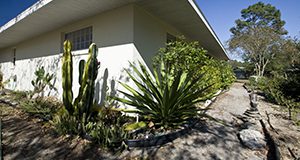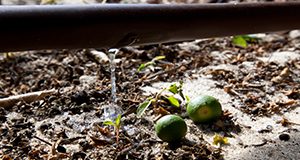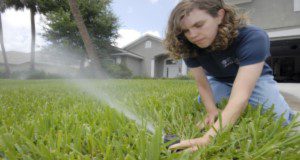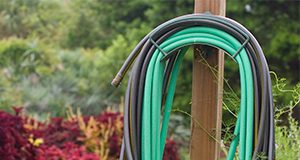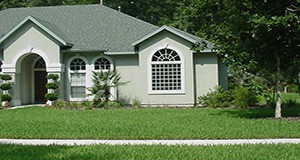This 5-page fact sheet written by Hayk Khachatryan, Alicia Rihn, Xumin Zhang, and Michael Dukes and published by the UF/IFAS Food and Resource Economics Department is the first in a series from the Sustainable Residential Landscape Project, a study conducted in 2016 to address perceptions of landscapes in Florida, different factors that could influence the adoption of more sustainable landscape options, and ways to promote sustainable landscaping options. The Sustainable Residential Landscape Project was funded by the UF/IFAS Center for Landscape Conservation and Ecology (CLCE).
https://edis.ifas.ufl.edu/fe1090
Tag: Michael Dukes
Consejos Basicos para Disenar Sistemas Eficientes de Riego
Este documento provee un panorama básico de los factores más importantes al diseñar. Written by Haimanote K. Bayabil, Kati W. Migliaccio, Michael Dukes, Laura Vasquez, and Carlos Balerdi, and published by the UF/IFAS Department of Agricultural and Biological Engineering, December 2020.
https://edis.ifas.ufl.edu/ae549
Homeowners’ Preferences for Smart Irrigation Systems and Features
Drought conditions make landscape irrigation and reducing water use top-of-mind for many Floridians. Encouraging wise water use is of particular importance to the smart irrigation industry and water policy makers. This 5-page fact sheet written by Hayk Khachatryan, Alicia Rihn, Dong Hee Suh, and Michael Dukes and published by the UF/IFAS Food and Resource Economics Department pinpoints key attributes and barriers affecting consumers' irrigation purchases and their adoption of smart irrigation technologies.
https://edis.ifas.ufl.edu/fe1080
Basic Tips for Designing Efficient Irrigation Systems
As freshwater resources become increasingly scarce and droughts become more frequent, there is a need for efficient use of water resources. Designing efficient irrigation systems and equipment will not only save money but also conserve water. This 10-page fact sheet discusses factors to consider when designing irrigation systems. Written by Haimanote K. Bayabil, Kati W. Migliaccio, Michael Dukes, and Laura Vasquez, and published by the UF/IFAS Department of Agricultural and Biological Engineering, February 2020.
https://edis.ifas.ufl.edu/ae539
Who Is Interested in Purchasing Smart Irrigation Systems?
Water scarcity concerns have led to revolutionary new smart technologies for residential landscape irrigation, including evapotranspiration and soil-moisture sensor systems. The adoption of smart irrigation technologies into residential landscapes, however, has been slow. This 7-page publication written by Hayk Khachatryan, Alicia Rihn, Caroline R. Warwick, and Michael Dukes and published by the UF/IFAS Food and Resource Economics Department provides an overview of how different consumer groups perceive smart irrigation technology and the best promotions to encourage smart irrigation adoption in home landscapes. It is designed for landscapers, irrigation specialists, and marketing professionals who work with and are interested in promoting smart irrigation technologies to end consumers. Firms can use the results to tailor marketing strategies to target relevant customer segments and create promotions to encourage homeowners to adopt water-saving irrigation technologies.
http://edis.ifas.ufl.edu/fe1069
Microirrigation for Home Landscapes
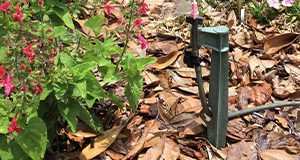 Microirrigation is a way to water plants using low pressure and low flowrates (usually 15 psi or less and 60 gph or less). Microirrigation systems can be easy to install above, on, or below the soil or mulch in landscape beds and are inexpensive to purchase. This 3-page fact sheet discusses types of microirrigation systems, benefits, design and installation, and maintenance. Written by Anne Yasalonis and Michael Dukes, and published by the UF/IFAS Department of Agricultural and Biological Engineering, October 2017.
Microirrigation is a way to water plants using low pressure and low flowrates (usually 15 psi or less and 60 gph or less). Microirrigation systems can be easy to install above, on, or below the soil or mulch in landscape beds and are inexpensive to purchase. This 3-page fact sheet discusses types of microirrigation systems, benefits, design and installation, and maintenance. Written by Anne Yasalonis and Michael Dukes, and published by the UF/IFAS Department of Agricultural and Biological Engineering, October 2017.
http://edis.ifas.ufl.edu/ae524
Estimating Benefits of Residential Outdoor Water Conservation: A Step-by-Step Guide
This 9-page fact sheet written by Tatiana Borisova, Laura A. Warner, Jennison Searcy, Anil Kumar Chaudhary, and Michael Dukes and published by the UF Department of Food and Resource Economics in February 2017 was developed to help Extension agents, water-conservation managers, and homeowners estimate the economic benefits of residential outdoor water conservation. It provides guidance for reporting benefits, including lowered utility bills for homeowners, reduced water-delivery costs for utilities, and increased water supply. This publication also offers an example of an impact statement.
http://edis.ifas.ufl.edu/fe1009
Household Water Usage and Irrigation Practices
Water pollution and drought in the United States have made water scarcity a widespread concern. Currently, residential consumers account for most urban water use, and meaningful programs that lead to water conservation rely on a comprehensive understanding of how consumers use water inside and outside their homes. This 5-page fact sheet written by Hayk Khachatryan, Alicia Rihn, and Michael Dukes and published by the Department of Food and Resource Economics outlines University of Florida researchers’ assessments of current US household indoor and outdoor water use to assist policy makers and researchers with creating incentives for homeowners to conserve water.
http://edis.ifas.ufl.edu/fe996
Consumer Perceptions of Lawn Fertilizer Brands
Widespread urbanization in the United States has increased the number of lawns. A healthy lawn provides many benefits, including urban heat dissipation, water quality protection, erosion control, carbon sequestration, community safety, aesthetics, and property value growth. Many homeowners maintain their healthy lawns by applying fertilizers throughout the growing season, but excess fertilizer runoff and leaching have received much attention recently because of waterway pollution and algae blooms, leading many states to place restrictions on what chemicals can be used in lawn fertilizers.
Consumers’ increased environmental awareness creates a niche opportunity for the fertilizer industry to promote environmentally friendly lawn fertilizers, but in order to effectively exploit it, industry stakeholders must understand consumer purchasing behavior before expending labor, time, and money creating products for sale. The following 3-page report written by Hayk Khachatryan, Alicia Rihn, and Michael Dukes and published by the Food and Resource Economics Department covers research methodology and the existing brand awareness and selection of consumers in the lawn fertilizer industry. It also discusses homeowners’ preferences for certain fertilizer attributes. Consumer awareness, selection, and attribute preferences indicate existing behavior, and understanding existing behavior assists in the development of effective marketing programs, promotional strategies, and policies.
http://edis.ifas.ufl.edu/fe990
US Consumer Preferences for Home Lawn Fertilizers
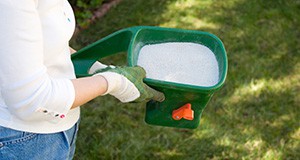
Consumer preferences for home lawn fertilizers are not always informed and do not always align with best practices. Understanding the disconnect will help turf industry educators better address consumers’ misperceptions about fertilizers, and help industry stakeholders design more appealing products and educate consumers effectively as they promote them. Knowing consumer preferences greatly reduces stakeholders’ risks and improves efficiency in determining future product and promotional strategies. This 4-page report discusses the findings of a 2013 survey of 1,066 US homeowners about their preferences and willingness-to-pay for various lawn fertilizer attributes. Written by Hayk Khachatryan, Alicia Rihn, and Michael Dukes and published by the Food and Resource Economics Department.
edis.ifas.ufl.edu/fe975
Frequently Asked Questions about Soil Moisture Sensor Irrigation Controllers (SMS)
![]()
A soil moisture sensor (SMS) is a device that detects how much moisture is in the soil and prevents an irrigation system from running when it is not needed. This 4-page fact sheet written by Paul Monaghan, Ondine Wells, Michael Dukes, Maria Morera, and Laura Warner and published by the Department of Agricultural Education and Communications explains how the technology functions as well as how to install, program, operate, and maintain an SMS for a money- and water-wise sustainable home landscape that’s lush and beautiful.
http://edis.ifas.ufl.edu/wc238
